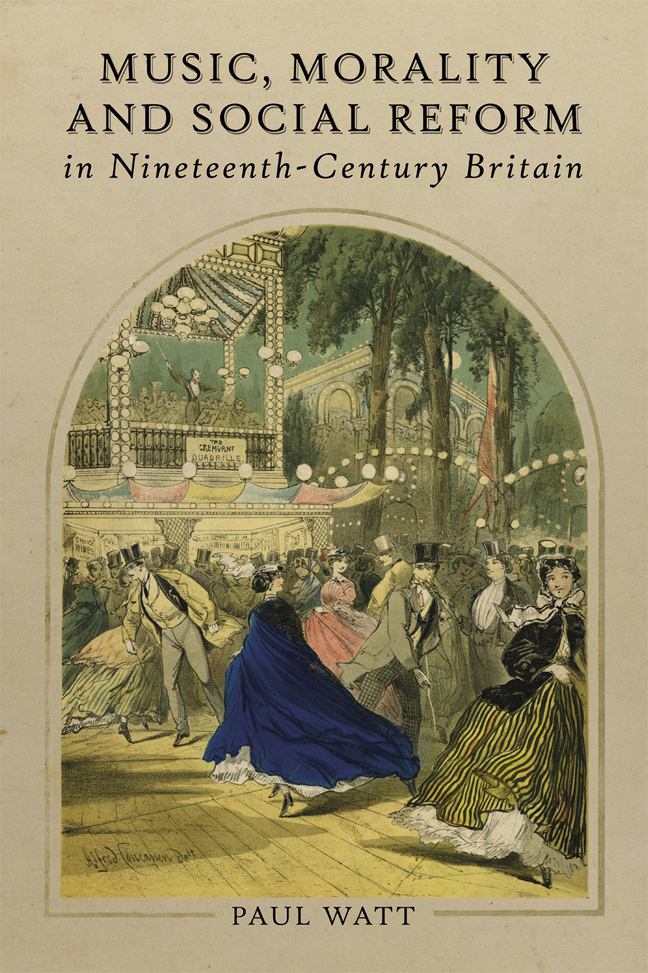149 results
How Did Nineteenth-Century Singers Care for Their Voice?
-
- Journal:
- Royal Musical Association Research Chronicle ,
- Published online by Cambridge University Press:
- 02 April 2024, pp. 1-29
-
- Article
-
- You have access
- Open access
- HTML
- Export citation
Head and Neck Cancer: United Kingdom National Multidisciplinary Guidelines, Sixth Edition
-
- Journal:
- The Journal of Laryngology & Otology / Volume 138 / Issue S1 / April 2024
- Published online by Cambridge University Press:
- 14 March 2024, pp. S1-S224
- Print publication:
- April 2024
-
- Article
-
- You have access
- Open access
- HTML
- Export citation
Bibliography
-
- Book:
- Music, Morality and Social Reform in Nineteenth-Century Britain
- Published by:
- Boydell & Brewer
- Published online:
- 21 February 2024
- Print publication:
- 21 November 2023, pp 185-206
-
- Chapter
- Export citation
6 - Utopia: Auguste Comte and Malcolm Quin
-
- Book:
- Music, Morality and Social Reform in Nineteenth-Century Britain
- Published by:
- Boydell & Brewer
- Published online:
- 21 February 2024
- Print publication:
- 21 November 2023, pp 156-180
-
- Chapter
- Export citation
Dedication
-
- Book:
- Music, Morality and Social Reform in Nineteenth-Century Britain
- Published by:
- Boydell & Brewer
- Published online:
- 21 February 2024
- Print publication:
- 21 November 2023, pp v-vi
-
- Chapter
- Export citation
Introduction
-
- Book:
- Music, Morality and Social Reform in Nineteenth-Century Britain
- Published by:
- Boydell & Brewer
- Published online:
- 21 February 2024
- Print publication:
- 21 November 2023, pp 1-14
-
- Chapter
- Export citation
Afterword
-
- Book:
- Music, Morality and Social Reform in Nineteenth-Century Britain
- Published by:
- Boydell & Brewer
- Published online:
- 21 February 2024
- Print publication:
- 21 November 2023, pp 181-184
-
- Chapter
- Export citation
List of Illustrations
-
- Book:
- Music, Morality and Social Reform in Nineteenth-Century Britain
- Published by:
- Boydell & Brewer
- Published online:
- 21 February 2024
- Print publication:
- 21 November 2023, pp viii-x
-
- Chapter
- Export citation
Acknowledgements
-
- Book:
- Music, Morality and Social Reform in Nineteenth-Century Britain
- Published by:
- Boydell & Brewer
- Published online:
- 21 February 2024
- Print publication:
- 21 November 2023, pp xi-xi
-
- Chapter
- Export citation

Music, Morality and Social Reform in Nineteenth-Century Britain
-
- Published by:
- Boydell & Brewer
- Published online:
- 21 February 2024
- Print publication:
- 21 November 2023
PART 2 - Social Reform
-
- Book:
- Music, Morality and Social Reform in Nineteenth-Century Britain
- Published by:
- Boydell & Brewer
- Published online:
- 21 February 2024
- Print publication:
- 21 November 2023, pp 101-102
-
- Chapter
- Export citation
Note on the Text
-
- Book:
- Music, Morality and Social Reform in Nineteenth-Century Britain
- Published by:
- Boydell & Brewer
- Published online:
- 21 February 2024
- Print publication:
- 21 November 2023, pp xii-xii
-
- Chapter
- Export citation
Frontmatter
-
- Book:
- Music, Morality and Social Reform in Nineteenth-Century Britain
- Published by:
- Boydell & Brewer
- Published online:
- 21 February 2024
- Print publication:
- 21 November 2023, pp i-iv
-
- Chapter
- Export citation
Contents
-
- Book:
- Music, Morality and Social Reform in Nineteenth-Century Britain
- Published by:
- Boydell & Brewer
- Published online:
- 21 February 2024
- Print publication:
- 21 November 2023, pp vii-vii
-
- Chapter
- Export citation
5 - Philanthropy: Hannah More and Octavia Hill
-
- Book:
- Music, Morality and Social Reform in Nineteenth-Century Britain
- Published by:
- Boydell & Brewer
- Published online:
- 21 February 2024
- Print publication:
- 21 November 2023, pp 130-155
-
- Chapter
- Export citation
PART 1 - Morality
-
- Book:
- Music, Morality and Social Reform in Nineteenth-Century Britain
- Published by:
- Boydell & Brewer
- Published online:
- 21 February 2024
- Print publication:
- 21 November 2023, pp 15-16
-
- Chapter
- Export citation
4 - Political Economy: William Stanley Jevons
-
- Book:
- Music, Morality and Social Reform in Nineteenth-Century Britain
- Published by:
- Boydell & Brewer
- Published online:
- 21 February 2024
- Print publication:
- 21 November 2023, pp 103-129
-
- Chapter
- Export citation
2 - Manners and Etiquette
-
- Book:
- Music, Morality and Social Reform in Nineteenth-Century Britain
- Published by:
- Boydell & Brewer
- Published online:
- 21 February 2024
- Print publication:
- 21 November 2023, pp 49-72
-
- Chapter
- Export citation
3 - Mechanics' Institutes
-
- Book:
- Music, Morality and Social Reform in Nineteenth-Century Britain
- Published by:
- Boydell & Brewer
- Published online:
- 21 February 2024
- Print publication:
- 21 November 2023, pp 73-100
-
- Chapter
- Export citation
Index
-
- Book:
- Music, Morality and Social Reform in Nineteenth-Century Britain
- Published by:
- Boydell & Brewer
- Published online:
- 21 February 2024
- Print publication:
- 21 November 2023, pp 207-215
-
- Chapter
- Export citation

